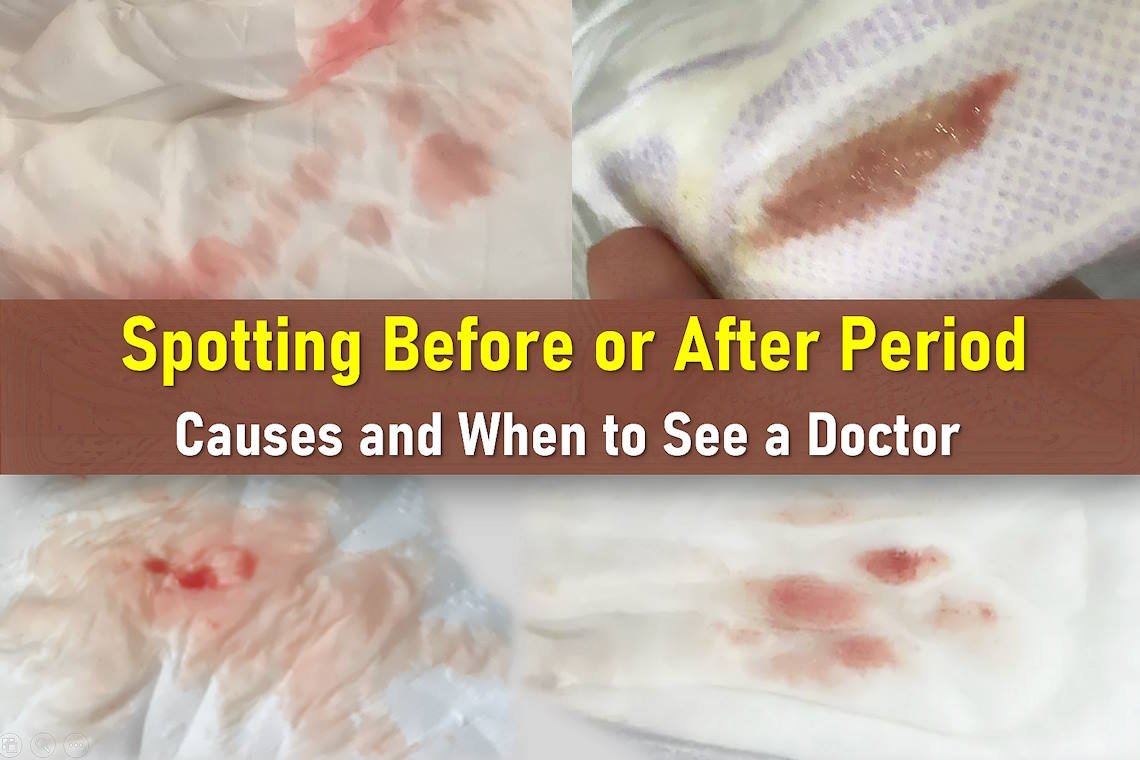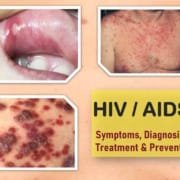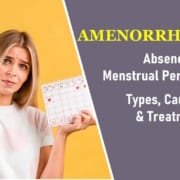Spotting Before Period: Causes and When to See a Doctor
Spotting before your period can be confusing and sometimes concerning. Many women experience light bleeding outside their regular menstrual cycle and wonder whether it’s normal or a sign of an underlying issue. While spotting before a period can result from harmless hormonal shifts, it may also indicate a health condition that requires attention. This guide explains the common causes of spotting, how it differs from a regular period, and when to seek medical advice.
What Is Spotting?
Spotting refers to light vaginal bleeding that isn’t heavy enough to require a pad or tampon. You might notice a few drops of blood, ranging from pink to red or brown, on your underwear or when you wipe. Some women prefer using a panty liner for comfort, but the flow is much lighter than a typical period.
For some, spotting between periods is a normal part of their cycle. For others, it could signal a health concern. Tracking your symptoms and understanding what’s typical for your body can help you identify when something might be wrong.
Spotting vs. Period: Key Differences
It’s important to distinguish between spotting and menstrual bleeding. Here’s how they differ:
- Spotting: Very light bleeding, often just a few drops. You may only see it when wiping. The color can vary from pink to brown, depending on how fresh the blood is.
- Light Period Bleeding: Slightly heavier than spotting, possibly requiring a panty liner or light pad. This is still considered part of your menstrual cycle.
- Intermenstrual Bleeding: Bleeding that occurs between periods and is unrelated to your normal cycle. If this happens frequently, consult a doctor.
Common Causes of Spotting Before a Period
Spotting before your period can have a variety of causes. While some are harmless and part of your body’s natural cycle, others may signal an underlying issue that needs medical evaluation. Understanding the potential reasons can help you track your health and know when to consult a healthcare professional.
Hormonal Fluctuations
Changes in estrogen and progesterone levels are a frequent cause of spotting, especially during times of hormonal shifts. This is particularly common in teenagers who have recently begun menstruating, women approaching menopause, and those with irregular cycles. Spotting from hormonal fluctuations is usually light and temporary, but if it becomes persistent or heavy, it’s important to check in with a healthcare provider.
Implantation Bleeding
For sexually active individuals, spotting a few days before an expected period could be implantation bleeding, an early sign of pregnancy. This occurs when a fertilized egg attaches to the uterine lining. Implantation bleeding is typically light pink or brown and much lighter than a normal period. However, not all women experience this, and other factors can also cause spotting. A pregnancy test may provide answers, but for the most accurate result, wait until after a missed period to test. If you’re pregnant and experience heavy bleeding, seek medical advice immediately.
You can use our “Implantation Calculator” to better track implantation, ovulation and other important dates related to your menstrual cycle and pregnancy.
Ovulation Spotting
About 5% of women experience light bleeding around the time of ovulation, which usually occurs mid-cycle. This spotting is generally pink or light red and lasts for one to two days. While the exact cause isn’t fully understood, it’s believed to be linked to a temporary dip in estrogen levels when the ovary releases an egg. Ovulation spotting is typically harmless but can be confused with other types of irregular bleeding, so it’s helpful to track your cycle patterns.
You can use our “Ovulation Calculator” to better track ovulation, fertile period and other important dates related to your menstrual cycle and pregnancy.
Spotting After Sex
Light spotting after sex is a fairly common occurrence and can result from several factors, including:
- Vaginal dryness: This is especially common after menopause or when using certain medications. A water-based lubricant can help reduce irritation during intercourse.
- Cervical irritation or inflammation: The cervix is sensitive and can bleed slightly after friction during sex, especially if it’s inflamed or irritated.
- Infections: Conditions like bacterial vaginosis (BV) or sexually transmitted infections (STIs) such as chlamydia or gonorrhea can cause post-coital spotting.
- Benign growths: Non-cancerous polyps or fibroids can sometimes lead to light bleeding after intercourse.
While occasional spotting after sex is usually not a cause for concern, frequent, heavy, or persistent bleeding should be evaluated by a healthcare provider to rule out infections, structural issues, or other underlying conditions.
Hormonal Contraceptives
Hormonal contraceptives are a common cause of breakthrough bleeding or spotting between periods, particularly during the first few months of use as the body adjusts to new hormone levels. Several scenarios can contribute to spotting while using birth control:
- Missed or inconsistent pill use: Forgetting to take a dose or taking pills at irregular times can disrupt hormone levels and trigger spotting.
- Extended-cycle pills: Skipping placebo weeks and taking active pills continuously may cause irregular bleeding or spotting.
- Non-hormonal IUDs: While copper IUDs do not release hormones, they can cause spotting—especially within the first few months after insertion as the body adapts.
- Emergency contraception: Pills like Plan B can cause spotting or changes in your next menstrual cycle, which is usually temporary.
If you experience spotting after sex while on birth control, it’s important to consider whether vaginal dryness or another underlying factor, like infection or cervical irritation, might also be contributing.
Puberty
For adolescents, spotting before periods is common as the menstrual cycle establishes itself. Irregular cycles, light bleeding between periods, and occasional spotting are part of the body’s adjustment to hormonal changes during puberty. These irregularities often resolve within two to three years after menarche (the first period). If heavy or painful periods persist, a healthcare provider can help rule out other conditions.
Perimenopause
The transition to menopause, known as perimenopause, is marked by hormonal fluctuations that can cause irregular cycles, spotting between periods, and other symptoms like hot flashes or sleep disturbances. While spotting can be a normal part of this transition, any heavy bleeding or bleeding after menopause should be evaluated by a healthcare professional to rule out other causes.
Stress and Lifestyle Factors
Chronic stress elevates cortisol levels, which can disrupt the balance of reproductive hormones and lead to changes in your menstrual cycle. This may include:
- Delayed or missed periods
- Spotting instead of a full period
- Heavier or lighter bleeding than usual
Other lifestyle factors, such as significant weight loss or gain, intense physical activity, or poor nutrition, can also impact menstrual health. If you’re experiencing spotting and suspect stress or lifestyle changes as the cause, consider relaxation techniques, balanced nutrition, or speaking with a healthcare provider for support.
Physical Trauma
Injury to the vaginal or cervical tissues can cause spotting. This may happen after sexual activity, medical procedures (such as a Pap smear), or accidental trauma. The cervix is particularly sensitive and may bleed if irritated. While light spotting after these events is usually not a cause for concern, persistent or heavy bleeding warrants evaluation to rule out infections or other complications.
Medications
Certain medications can contribute to spotting or irregular bleeding. These include:
- Blood thinners (such as aspirin or warfarin)
- Hormonal therapies (like birth control pills or hormone replacement therapy)
- Some antidepressants
If you notice spotting after starting a new medication, review the side effects with your doctor. They may adjust your dosage or suggest alternatives if the bleeding is problematic.
Uterine or Cervical Polyps
Polyps are small, usually benign growths in the uterus or on the cervix that can cause:
- Spotting before or after periods
- Light bleeding after sex
- Heavier or irregular periods
Though most polyps are non-cancerous, they can sometimes contribute to fertility issues or other symptoms. If bleeding persists, a doctor may recommend removing the polyps in a simple office procedure.
Endometriosis
Endometriosis occurs when tissue similar to the uterine lining grows outside the uterus, leading to pain, heavy periods, and spotting between cycles. Spotting may also occur before periods start. Endometriosis can affect fertility and cause other symptoms like pelvic pain, bloating, or painful bowel movements. Diagnosis often requires imaging tests or laparoscopy, and treatments may include medication or surgery depending on severity.
Infections and STIs
Sexually transmitted infections (STIs) such as chlamydia or gonorrhea can cause:
- Pink or brown spotting
- Unusual discharge
- Pain during urination
Pelvic inflammatory disease (PID), often resulting from untreated STIs, can also lead to spotting between periods, pelvic pain, and fever. Early detection and treatment of STIs are key to preventing complications like PID or infertility. Regular STI screenings are essential for sexually active individuals, even without noticeable symptoms.
Uterine Fibroids
Fibroids are non-cancerous growths in the uterus that can cause various menstrual issues, including spotting before periods, prolonged bleeding, pelvic pressure, or pain. The size and location of fibroids can influence symptoms. While many fibroids are small and cause no problems, larger fibroids may require medical management.
Polycystic Ovary Syndrome (PCOS)
Polycystic Ovary Syndrome (PCOS) is a hormonal disorder that can lead to infrequent or absent periods, spotting when a period is due but doesn’t arrive, or heavy bleeding when periods do occur. Other symptoms of PCOS may include acne, excess hair growth, and difficulty getting pregnant. If you suspect PCOS, a healthcare provider can perform tests to confirm the diagnosis and recommend appropriate treatment.
Thyroid Disorders
Thyroid conditions, such as hypothyroidism (underactive thyroid) or hyperthyroidism (overactive thyroid), can impact menstrual cycles, resulting in:
- Spotting but no period
- Lighter or heavier bleeding than usual
- Irregular cycle lengths
Because thyroid problems often develop gradually, they can go unnoticed. If you’re experiencing unexplained spotting or changes in your cycle, a simple blood test can check thyroid hormone levels and guide treatment.
Cancers
Although less common, persistent or unusual bleeding can be an early sign of gynecological cancers such as endometrial, ovarian, uterine, cervical, or vaginal cancer. For instance, approximately 90% of those diagnosed with endometrial cancer report abnormal uterine bleeding, including spotting between periods or after menopause. Other potential signs of cancer may include:
- Pelvic pain or pressure
- Pain during sex
- Changes in vaginal discharge (such as an unusual color, odor, or consistency)
- Bleeding after menopause
Cervical cancer is almost always caused by persistent infection with the human papillomavirus (HPV). The HPV vaccine is highly effective at preventing most cases of cervical cancer and is recommended for both boys and girls starting at ages 11–12. If you experience abnormal bleeding, particularly after menopause, it’s essential to consult a healthcare provider for evaluation and potential screening tests such as a Pap smear or pelvic ultrasound.
When to See a Doctor About Spotting
Consult your healthcare provider if you experience:
- Spotting for two weeks or longer
- Bleeding after menopause
- Heavy bleeding between periods
- Pelvic pain or discomfort
- Dizziness or fatigue accompanying spotting
- Unusual discharge with spotting
Managing and Treating Spotting
Treatment depends on the underlying cause:
Normal Cycle Variations
Occasional spotting few days before period or after ovulation often requires no treatment. Track patterns to identify what’s normal for you.
Birth Control-Related Spotting
For breakthrough bleeding from hormonal contraceptives:
- Allow 3-6 months for your body to adjust
- Take pills at the same time daily
- Discuss alternative methods with your doctor if persistent
Medical Conditions
Conditions like PCOS, fibroids, or infections may require:
- Hormone therapy
- Antibiotics
- Surgical procedures (for polyps/fibroids)
Lifestyle Approaches
For stress-related spotting:
- Practice relaxation techniques
- Maintain balanced nutrition
- Avoid excessive exercise
Final Thoughts
While spotting between periods is often harmless, it’s important to listen to your body. Many women experience occasional light bleeding due to hormonal fluctuations, but persistent or unusual spotting warrants evaluation. When in doubt, consult your healthcare provider – it’s always better to err on the side of caution with reproductive health.










